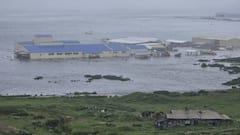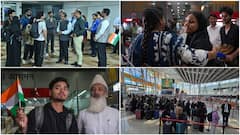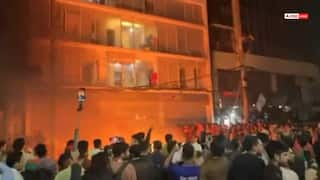Indian-American computer engineer honoured with Texas' highest academic award
Texas, Feb 26 (PTI): Indian origin trailblazing computer engineer and professor Ashok Veeraraghavan has been awarded the Edith and Peter O'Donnell Award in engineering, one of the highest academic honours in Texa.

Texas, Feb 26 (PTI): Indian origin trailblazing computer engineer and professor Ashok Veeraraghavan has been awarded the Edith and Peter O'Donnell Award in engineering, one of the highest academic honours in Texas.
The Texas Academy of Medicine, Engineering, Science and Technology (TAMEST), which presents this award to rising researchers in the state, said Veeraraghavan, professor of electrical and computer engineering at George R. Brown School of Engineering at Rice University, was chosen for his revolutionary imaging technology that seeks to make the invisible visible.
The award is given annually to star researchers in the state engaged in pathbreaking work in medicine, engineering, biological sciences, physical sciences and technology innovation.
This year's engineering award went to Veeraraghavan, recognising his group's “revolutionary imaging technology that seeks to make the invisible visible," according to a statement from TAMEST.
Originally from Chennai, where he spent most of his pre-adult life, Veeraraghavan told PTI, "I am delighted to receive this award. It is the recognition of the wonderful and innovative research that many students, postdocs and research scientists, in the computational imaging lab at Rice University have done over the last decade" Veeraraghavan’s computational imaging lab conducts research on imaging processes holistically, from optics and sensor design to machine learning processing algorithms, to tackle imaging challenges that are otherwise beyond the reach of current technologies.
"Most imaging systems today are designed in a way that does not take all these three things into account together; they are designed separately," Veeraraghavan said.
"Co-design opens up new degrees of freedom and allows us to achieve some imaging functionalities or performance capabilities that are otherwise not possible," he added.
Veeraraghavan’s research seeks to provide solutions for imaging scenarios where the visualisation target is inaccessible to current imaging technologies due to the scattering of light in participating media.
“There are many examples of this," he said.
“One familiar example is when you’re driving a car and it’s foggy, so you can’t see too far out. In this case, fog acts as the scattering medium. If you’re doing satellite imaging, clouds can act as the scattering medium. And if you’re doing biological imaging, it’s skin that acts as the obscurant so you can’t see blood cells or the structure of the vascular system, for example," he explained.
“In all of these contexts, the main challenge is that light interacts with the participating media and scatters, which means you lose information about the image you are trying to capture. I think imaging through scattering media is one of the most challenging problems that’s left in imaging. So that is what the core focus of my lab is, and we've made significant advances toward solving that problem.” Luay Nakhleh, the William and Stephanie Sick Dean of Engineering and professor of computer science and biosciences at Rice, congratulated Veeraraghavan for his achievement saying he "richly deserves this special recognition".
“In fact, this is extra special for our school since it is the second year in a row that one of our faculty receives the O’Donnell Award, with Jamie Padgett being last year’s recipient." Ramamoorthy Ramesh, Rice’s executive vice president for research and a professor of materials science and nanoengineering, physics and astronomy, praised Veeraraghavan and underscored the impact of his research.
“I'm so pleased to see Ashok recognised with the Edith and Peter O'Donnell Award, joining an accomplished group of prior Rice University recipients of the honour,” Ramesh said.
“Ashok has used math and technology to solve some of the most difficult problems in imaging. His work has broad applications for the advancement of human health, microscopy, national security, autonomous vehicles, photography and so much more.” PTI SHK RPA
(This story is published as part of the auto-generated syndicate wire feed. No editing has been done in the headline or the body by ABP Live.)
Related Video
Atal Birth Anniversary: PM Modi, President Murmu Pay Tribute to Atal Bihari Vajpayee on His 101st Birth Anniversary





































